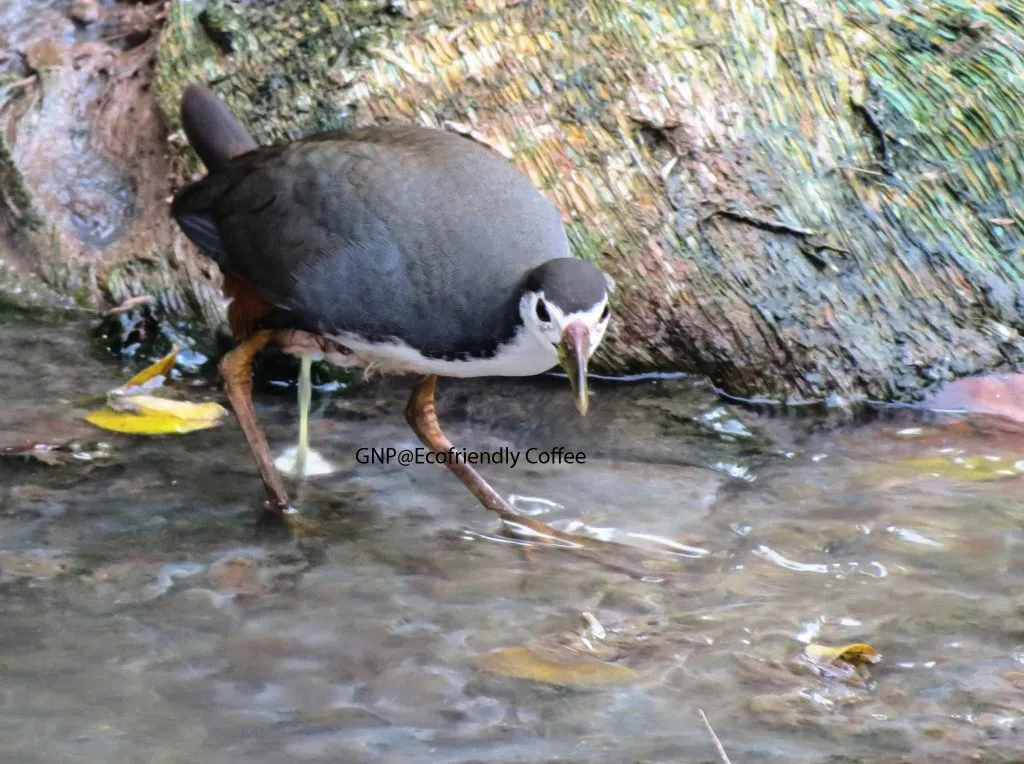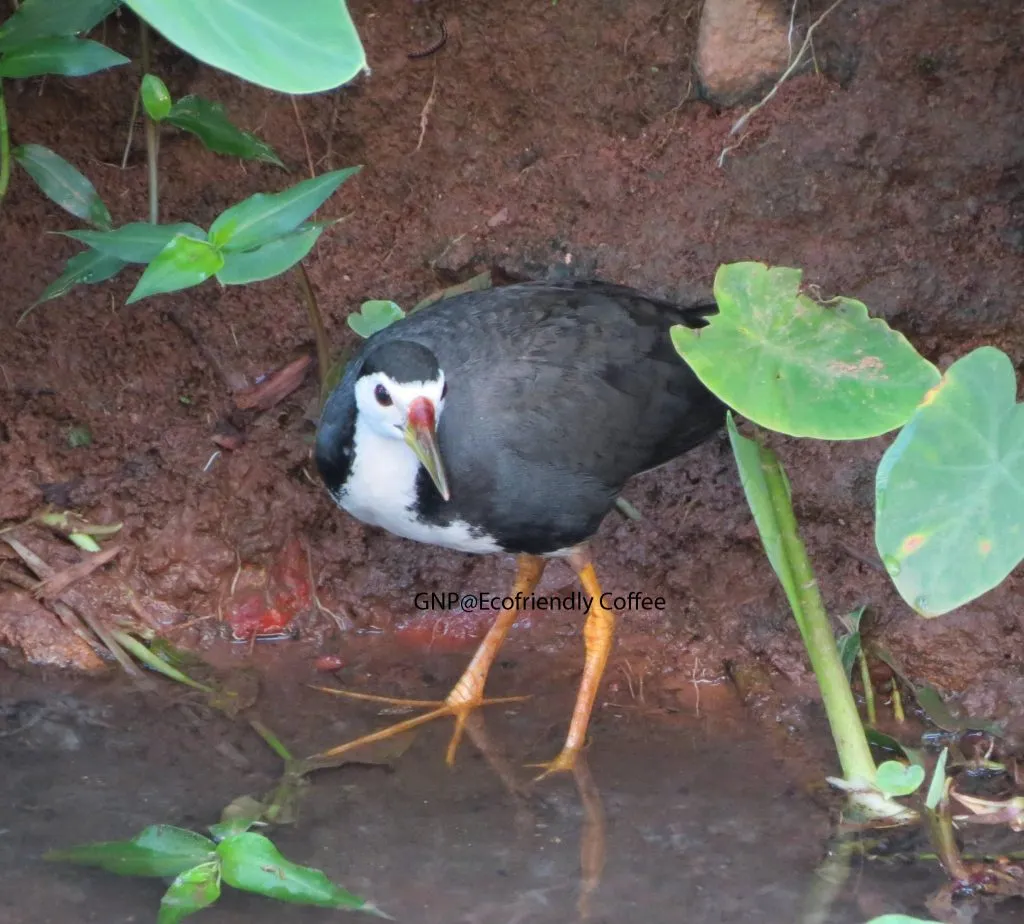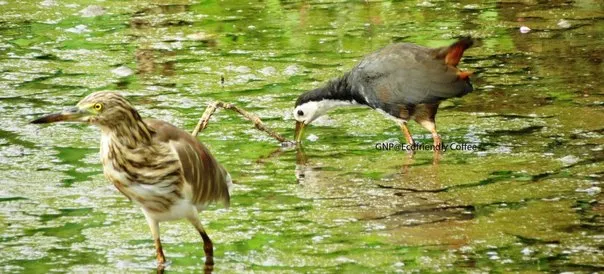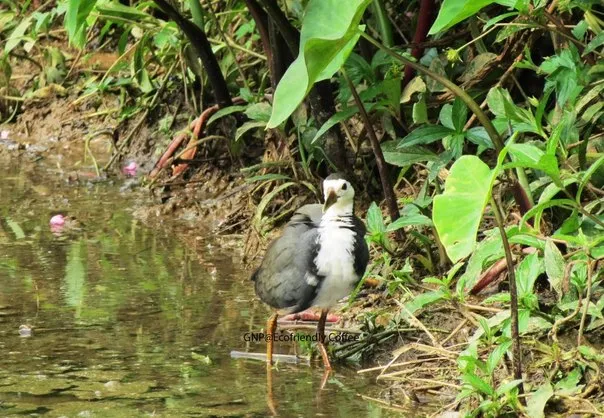by Dr. Anand Titus and Geeta N. Pereira
There is no doubt in our mind that birds inside shade grown ecofriendly coffee forests are often outstanding Indicators of the health of the overall environment within the coffee ecosystem. Their abundance and diversity is closely linked to loss of habitat. The need of the hour is for coffee planter’s to understand that these birds are highly sensitive to threats in terms of pesticide, weedicide and chemical poisoning. Hence, we would like to impress on the planting community that “collectively” we need to have a balanced approach in terms of integrated pest and weed management rather than rely heavily on the chemical approach to protect these winged visitors.
By understanding bird behaviour to some extent, we have noticed that birds have become specialized to occupy certain environmental niches and together they occupy almost every plausible habitat. Enumeration of birds in their respective habitats can also throw priceless insights in plant and animal diversity in which they coexist.
We keep mentioning time and again that a scientific methodology needs to be adapted to survey bird communities in a variety of habitats. Large research gaps still remain and bird communities in many varied ecological niches within the confines of the coffee forest remain virtually unexplored.


Strategies
- The first step in understanding and researching bird communities is to understand the coffee forests based on Agro Climatic regions. Next develop appropriate methods of survey and record their presence. Start with a known survey. Divide the land characteristics as aquatic, semi aquatic, and factor in various biotic and abiotic parameters. (Elevation, climate, and land cover).Our understanding is that each coffee region is so very different in terms of topography and climate in a way that the coffee forests spatially vary greatly and support different bird communities. So new methods need to be devised because the existing ones may have many deficiencies.
- Traditional biodiversity monitoring techniques may not be suited. It may result in some species being unnoticed. There is every chance that the endemic bird species occupying a highly specialized niche may be left out.
- Although, we have monitored birds for several years, we are unable to study in depth, nocturnal birds because of lack of resources. As a result very little is known about their populations, distributions or behavior.
We have provided pictures of the White Breasted Water Hen, a bird which is very common observed in ponds and lakes inside coffee forests.
Kingdom
Animalia
Phylum
Chordata
Class
Aves
Order
Gruiformes
Family
Rallidae
Genus
Amaurornis
Species
A. phoenicurus


Description
The white breasted water hen is a medium sized bird with clean white face, neck, breast and belly, and reddish brown colour on the underside of the tail. They have long toes, a short tail and a yellow bill and legs. Females are slightly smaller than the males. They are largely crepuscular in activity.
Distribution and habitat
These birds are very shy and avoid human contact. Rarely seen in the open, they are seen in marshes and reeds and seldom come out in the open. We have rarely seen them swimming with other birds or associate with other semi aquatic or land birds. They are seen in almost all Coffee growing regions, irrespective of elevation and topography.
Behavior and ecology
We have observed many pairs of White breasted water hens living harmoniously in close proximity to one another, without any territorial markings. They mostly forage at the edge of a pond or lake and rarely venture into the middle or open areas. When they sense danger, they immediately take cover in reeds or climb high into bushes or shrubs. They prefer not to fly long distances. They eat tender roots, shoots, seeds of marsh plants, small fish, snails, beetles and other insects. The breeding season of the white-breasted water hen varies depending on location, and in some places the species may breed year-round. They lay a clutch of 6 to 7 eggs, which hatch in approximately 20 days. Both sexes incubate the eggs and take care of the chicks. The chicks are black and fluffy and leave the nest soon after hatching. Both parents care for them, and they may be seen running alongside the parents.
Status and threats
White-breasted Water hens have adapted well to human activity and are not endangered. However, they are sometimes still hunted as food. Classified as Least Concern (LC) on the IUCN Red List.


References
ecofriendlycoffee.org/eco-friendly-indian-coffee-a-profile/
ecofriendlycoffee.org/bird-friendly-shade-coffee-and-the-brahminy-kite/
ecofriendlycoffee.org/bird-friendly-shade-coffee-and-the-pied-kingfisher/
ecofriendlycoffee.org/bird-friendly-shade-coffee-and-the-black-crowned-night-heron/
ecofriendlycoffee.org/a-symphony-of-birds-inside-coffee-forests/
ecofriendlycoffee.org/aquatic-birds-of-the-western-ghats/
ecofriendlycoffee.org/coffee-forests-and-green-national-accounts/
ecofriendlycoffee.org/coffee-forest-symbiosis/
ecofriendlycoffee.org/coffee-forests-and-wildlife-credits/
www.arkive.org/white-breasted-waterhen/amaurornis-phoenicurus/
en.wikipedia.org/wiki/White-breasted_Waterhen